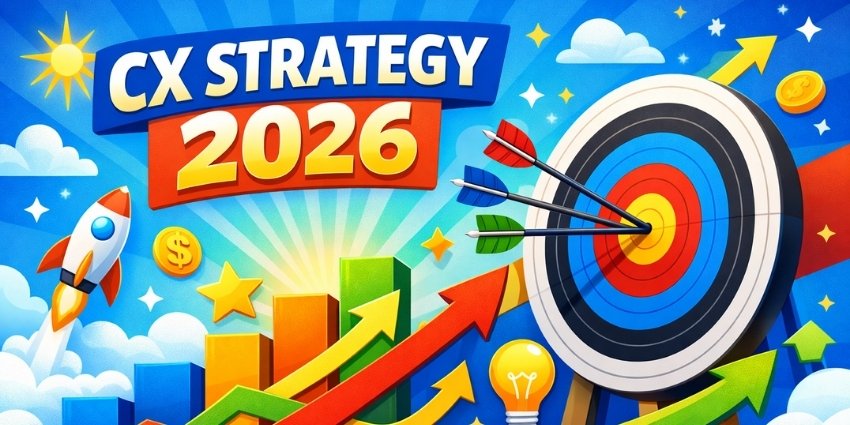The communication preferences of customers are diverse. Of course, some still like to pick up the phone. Nevertheless, many now prefer to interact via digital channels, such as email, live chat, and messaging apps.
Adding complexity, lots of customers will jump from one channel to another, in the hope of uncovering the quickest path to resolution. Research by Salesforce underlines this trend, uncovering that 74% of customers use multiple channels from the beginning until the end of a transaction.
Unfortunately, service often suffers because of this trend. Contact centers struggle to:
- Track the conversation history of customers across channels
- Retain the context of an interaction as it moves between channels
- Draw full value from new technologies within the contact center ecosystem
However, an omnichannel solution removes these frustrations, orchestrating service delivery across all of these channels.
What Is an Omnichannel Contact Center Solution?
An omnichannel contact center solution provides a range of fully integrated contact center channels. Therefore, it enables information to follow each customer as they move between channels, allowing agents to access the entire context and history of the customer’s contact center journey.
Such a solution is an evolution from a multichannel contact center solution where all history and context disappear as soon as the customer changes channel. It also builds on a multimodal contact center solution, which enables agents to use more than one channel during an interaction.
By pressing forwards and building an omnichannel solution, contact centers can unlock a whole host of invaluable features. These include:
- Comprehensive coverage – The solution supports both inbound and outbound interactions. For instance, contact centres may contact a recent website visitor using Facebook Messenger (outbound) and once the visitor converts into a customer, they may ask for help via Messenger as well (inbound).
- Data interoperability – The solution enables a unified data view across multiple channels. A defining feature of omnichannel, this sets it apart from a multichannel solution. Users (i.e., contact center agents) can view customer context across channels whenever they interact with a customer.
- Cloud hosting – Often, omnichannel solutions are hosted on the cloud as it makes integrations easier. Companies can add integrations for new channels and drive interoperability through applications programming interfaces (APIs).
- Seamless CX – The solution will provide end customers with a more convenient, intuitive, and seamless experience, no matter which channel they choose. As agents can access a unified data source, customers do not need to repeat information or duplicate their efforts.
Finally, an important aspect of omnichannel is that it fosters collaboration among agents. The solution allows the contact center team to work together on open requests and tickets. No matter if agents are working from different channels, they can collaborate.
From such an example, it becomes apparent that omnichannel contact center solutions provide businesses with a wide range of benefits. But, what about the cons? Let’s explore.
Pros and Cons of Using an Omnichannel Contact Center Solution
There are seven key business benefits of using the solution:
- Business agility – Collecting data from all channels in one central location makes it easier to bring new technologies into the contact center ecosystem. Lowering the burden on IT teams, this speeds-up transformation initiatives, enabling companies to keep up with CX innovators.
- Greater scalability – Omnichannel contact center solutions make it easier to scale the service function. Contact centers can then add channels, onboard agents, optimize routing, and much more entirely within the cloud.
- Lower staffing pressures – Digital channels lower the strain on agents as they can move queries across channels. For example, if it is easier to solve a problem over the phone, they may seamlessly escalate the contact. Doing so reduces handling times and staffing overheads.
- Meeting customer demand – Channel choice is now an expectation for most customers. They want to connect with their favorite brands and service providers across different platforms. Omnichannel equips companies to cater to this need.
- Automation opportunity – With a fully integrated system, companies may set up automated workflows that save agents time and effort. For instance, a contact center could connect a website chat app to the brand’s social media profile. If a visitor then expresses an interest in the brand via chat, the solution can automatically trigger a social media message to maintain engagement.
- 24/7 availability – An omnichannel solution ensures customers can reach out to the contact center – via a digital channel – at a time that is convenient to them. For instance, outside of nine-to-five hours, customers can send an email or chat messages – depending on the device they are using – and expect a timely response.
- Mobile readiness – Omnichannel solutions prepare businesses for the smartphone-first era. Customers use chat and social media primarily on their mobile devices, and the solution helps agents to cater to this traffic.
Now, the potential cons. There are a few downsides to get to grips with when first adopting an omnichannel contact center solution.
To begin with, it involves a complex setup process, and some technical expertise is likely necessary to configure the integrations. However, a cloud solution makes the process much more efficient.
During setup, agents will also require training to make use of the solution’s features, such as contextual customer knowledge from different channels.
Also, an omnichannel solution is perhaps too much of an investment for small businesses where customers overwhelmingly prefer a specific channel. As such, it is best practice to study customer needs and demographics to decide if the solution is right for them.
Finally, the success of omnichannel hinges on agent availability and expertise. Businesses must ensure that customers do not reach out on different channels, only to find that there is a very long queue or an agent who lacks the coaching to handle their query.
Top Omnichannel Contact Center Solutions and Best Practices
When looking to invest in an omnichannel solution, there are many options to consider. However, using Gartner’s Magic Quadrant report for contact center as a service (CcaaS) as a guide, there are three leaders in the space.
- Genesys Cloud CX – The solution unifies agent and customer experiences via phone, email, chat, text, and social channels. There is a multi-cloud hosting option as well.
- NICE CXone – Powered by AI, the solution features omnichannel routing. The platform is also “developer-ready” in case companies require significant customization.
- Talkdesk – The company aims to help clients automate and optimize their most critical customer service processes, while developing a clear omnichannel strategy.
Yet, whatever the provider, to get the most out of an omnichannel contact center solution, ensure that it complements the CX strategy. Mapping out customer journeys across channels to pinpoint specific needs is an excellent initiative to set off contact centers off on the best possible path.
To discover how contact centers can plot out omnichannel customer journeys, read our article: What is Customer Journey Mapping?







